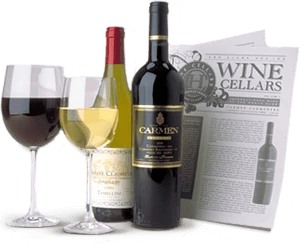Sauvage Vin de Bordeaux 2022 is a classic red Bordeaux style wine that offers a refined and structured profile. In the glass, it presents a deep ruby hue with purple reflections. The nose is layered and expressive, revealing aromas of blackcurrant, plum, and ripe cherry, interwoven with notes of tobacco, cedar, and graphite. On the palate, the wine is medium to full-bodied with a balanced structure. Flavors of dark berries, dried herbs, and hints of spice are supported by firm yet polished tannins and a backbone of fresh acidity. Subtle oak integration adds complexity through nuances of vanilla and toasted wood. The finish is long and elegant, leaving impressions of dark fruit and earth.
Sauvage Vin de Bordeaux 2022 is an example of French Bordeaux wines, which are known for their structure and complexity, and pair wonderfully with a variety of savory dishes. Red Bordeaux blends complement grilled or roasted meats such as lamb, beef tenderloin, and duck confit. Earthy dishes like mushroom risotto or lentil stew also pair well, enhancing the wine’s depth. Aged cheeses such as Comté, Gouda, and blue cheese bring out this Bordeaux’s bold tannins and dark fruit flavors. Pork, chicken, or charcuterie will match nicely too, making this wine versatile for elegant dinners or casual gatherings.
Maison Idiart is a Bordeaux-based wine négociant founded in 2013 by Nicolas Idiart, a passionate winemaker whose love for wine was nurtured by his father and grandfather. At the age of 19, Nicolas graduated from the Bordeaux winemaking school in Blanquefort, becoming one of its youngest graduates. His early career included hands-on experience in renowned French wine regions such as Chinon, Touraine, and Muscadet, as well as international stints in Australia and New Zealand.
After several years of global exploration, Nicolas transitioned into wine sales, focusing primarily on the North American market. This period provided him with valuable insights into international wine markets and consumer preferences. At the age of 33, driven by a desire to return to his roots in winemaking, he established Maison Idiart with an artisanal approach, emphasizing small batches of handcrafted wines that reflect the unique terroirs of their origins.
Maison Idiart's portfolio showcases a diverse range of wines from various French regions, including the Loire Valley, Côtes du Rhône, Bordeaux, and Languedoc-Roussillon. The winery also extends its offerings to include wines from New Zealand, reflecting Nicolas's international experience. A hallmark of Maison Idiart's philosophy is its commitment to terroir-driven wines, utilizing natural yeast fermentations and sustainable viticultural practices. The vineyards, particularly those in Touraine, benefit from favorable conditions such as warm summers, cool breezes, and calcareous Tuffeau soils, contributing to the distinctive character of the wines.
Innovative in its approach, Maison Idiart embraces eco-friendly packaging solutions, offering some of their wines in kegs and cans to reduce environmental impact and provide versatile options for consumers. This blend of traditional winemaking techniques with modern sustainability initiatives underscores Maison Idiart's dedication to producing high-quality, expressive wines that honor both heritage and innovation.
The history of Bordeaux wines spans over two millennia, beginning with the Romans, who first cultivated vines in the region around the 1st century AD. However, Bordeaux’s global significance as a wine-producing powerhouse began in the 12th century when Eleanor of Aquitaine married King Henry II of England. This union gave England direct access to Bordeaux’s wine trade, turning Claret—red Bordeaux wine that was often rather light in body, at the time—into a favorite in English courts and establishing Bordeaux’s commercial wine dominance.
Over the centuries, Bordeaux’s strategic location near the Atlantic Ocean and along the Garonne and Dordogne rivers facilitated trade and export, helping the region grow in wealth and prestige. The Dutch played a key role in the 17th century by draining the Médoc marshlands, making them suitable for vineyards that would later produce some of the world’s most celebrated wines.
A major milestone came in 1855 when Napoleon III requested a classification system for Bordeaux wines for the Paris Exposition. The result was the 1855 Classification, ranking the top châteaux of the Médoc and Sauternes by reputation and price. Today, Bordeaux is known for its structured red blends, predominantly Cabernet Sauvignon and Merlot, as well as its refined white wines and luscious dessert wines from Sauternes.

Enjoy Limited Production Estate
Bottled Wines
Discover limited production estate bottled wines such as Vergenoegd's internationally
acclaimed 2005 Cabernet Sauvignon, imported exclusively for our members.

